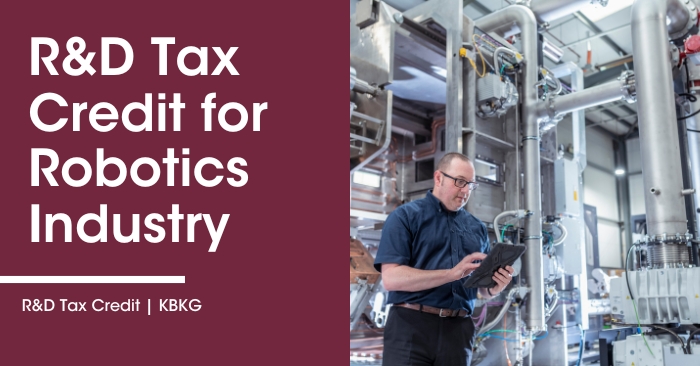R&D Tax Credits for Robotics Industry
If you run a small business, large corporation, or a startup, business payroll taxes could take a big bite out of your profitability. Companies in the robotics industry can lower their tax burden with the research and development (R&D) tax credit. This tax credit can help businesses developing exciting innovations in robotics reduce their heavy tax burden by offsetting a portion of these large expenses.
How the R&D Tax Credit Works
The federal government has been a big proponent of idea development and investment since the 1980s. During the Reagan era, the government enacted incentives, such as the R&D tax credit, to encourage companies to invest in R&D in tech.
The R&D tax credit has since been made permanent and even expanded upon in 2015. While most large businesses have incorporated this tax credit into their yearly tax planning process, many smaller and medium-sized organizations in robotics have not followed suit. The nature of the robotics industry makes the R&D tax credit a no-brainer.
The R&D tax credit allows companies to reduce their tax liability if they participate in approved R&D activities. There are strict rules governing the qualification criteria of this tax credit. Still, if your organization invests payroll expenses, supplies, or contractor costs in R&D through product development or process automation, your bottom line may benefit from it.
IRS Requirements for the R&D Tax Credit
There is a set of criteria called the four-part test which a company must meet for their qualified research expenses (“QREs”) to be eligible for this tax credit:
- The activities performed must be to develop a new product or process or improve an existing one.
- The research must rely on a form of hard science (i.e., engineering, physics, computer science, etc.). For robotics organizations, this is an easy guideline to meet.
- There must be some level of technical uncertainty at the outset of the research. This uncertainty could be related to your capability or method of developing or improving a product or process or determining which final design is most appropriate.
- Your team must utilize a process of experimentation. This could be a formal procedure, such as following the scientific method, or more informal, such as systematic trial and error.
Activities in Robotics that Qualify as R&D
The R&D tax credit is available for companies in various science and technology industries. Your team needs to determine if participating in R&D benefits your organization in the long term. There is an initial investment in covering the costs of research, and the credit does not reimburse all expenses.
The federal R&D tax credit could save your company up to 10% of your QRE cost. It could also be claimed in multiple tax years if the costs are extensive. Additionally, most states offer their own version of an R&D tax credit to lower your state tax liability.
Here are some example activities in the robotics industry that may qualify for the tax credit:
- Developing algorithms for machine learning and artificial intelligence
- Designing and programming functions and applications for robotic systems
- Engineering and testing new or improved machine prototypes
- Automating processes, such as manufacturing or order fulfillment through machine development.
Steps to Claim the R&D Tax Credit
If your organization participates in R&D during a tax year, you should work with your technical and accounting teams and your tax preparers to determine the credit benefit. To claim the R&D tax credit, your business will need to file the federal IRS form 6765.
On the form, you will need to fill out your QREs for the year, including qualified employee wages, contract development costs, and supplies consumed in the development of prototypes. Form 6765 offers two different calculation methods to choose from: (1) the Regular method, which requires your current year and historical QREs, as well as historical gross receipts information, and (2) the Alternative Simplified Credit (“ASC”) method, which only requires your QREs from the current and prior three tax years. The form also allows qualified small businesses to elect to use their R&D tax credit against future payroll tax liability.
Your organization will want to keep track of its R&D spend throughout the year so you have an accurate record of your R&D activities and QREs when calculating the credit at the end of the tax year. Maintaining these records is also important to ensure you can support your claim if it is ever audited.
The key to boosting your company’s success in the robotics industry is to stay ahead of your competition, and funding the next big idea starts with solid financial and tax planning.


